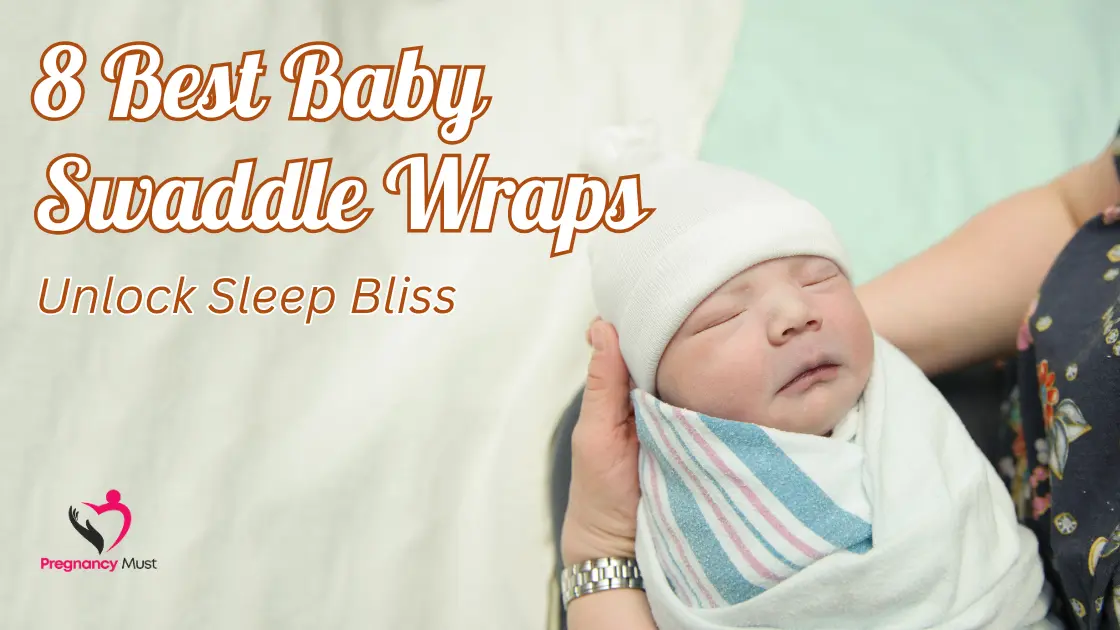Baby swaddle is the most popular baby essential to sooth and relax your newborn baby. It simulates the snug environment of the womb, providing a sense of security for your baby.
Table of Contents
- What Is a Baby Swaddle?
- Why Do Babies Need Swaddling?
- How to Swaddle a Baby Properly
- Choosing the Best Swaddles for Newborns
- Best Newborn Swaddle Picks
- When to Stop Swaddling Baby
- Benefits of Swaddling Your Newborn
- Is Swaddling Safe for All Babies?
- How to Transition Out of the Swaddle
- Top Features to Look for in a Baby Swaddle Wrap
- Best Materials for Swaddling Blankets
- FAQs About Baby Swaddles
What Is a Baby Swaddle?
A baby swaddle is a soft fabric blanket or garment intended to tightly wrap your infant. This reduces the Moro reflex and allows for a better night’s sleep.
Why Do Babies Need Swaddling?
here are a few reasons why you would swaddle a newborn. Here’s how:
Mimics Womb Environment
Swaddling mimics the cozy, comfortable feeling of being in the womb. After spending nine months in a warm, tight environment, the open air of the outside world can feel overwhelming. A baby swaddle recreates that cozy pressure, helping your baby feel protected and secure.
- Why It Matters: This familiar sensation calms the baby’s nervous system and prevents overstimulation.
- Bonus: It reduces sudden movements that might jolt them awake.
Think of it as wrapping your baby in a soft hug—something they’ve been used to since conception.
Reduces Anxiety
Newborns often experience what’s called “Moro Reflex” or startle reflex—a sudden flailing of arms and legs in response to noise or movement. This can cause anxiety and sudden crying spells. Swaddling gently restricts limb movement, which:
- Suppresses that startle reflex
- Provides a comforting, steady pressure across the body
- Makes your baby feel safe in a controlled space
Babies who are as readily startled also are carefuller and cry less, resulting in peace for baby and parent.
Improves Sleep Duration
One of the most celebrated benefits of a baby swaddle is better, longer sleep. Babies who are swaddled tend to:
- Sleep more deeply
- Wake up less frequently due to reflexive movements
- Have longer naps and better nighttime rest
The snug fit of the baby swaddle stops their arms and legs from jerking them awake. More sleep means better mood, faster brain development, and more rest for parents too!
Studies show swaddled babies wake up less often and sleep 1–2 hours longer on average compared to non-swaddled infants.
Prevents Face Scratching
Newborns have little control over their hand movements in the early weeks. Their nails grow quickly and can be surprisingly sharp. Even with regular trimming, it’s common for babies to:
- Scratch their face during sleep or while fussing
- Accidentally rub their eyes or nose
- Irritate sensitive baby skin
A baby swaddle keeps the arms tucked gently at their sides, eliminating the chance of accidental face scratches. This is especially helpful if your baby suffers from eczema or has sensitive skin.
How to Swaddle a Baby Properly
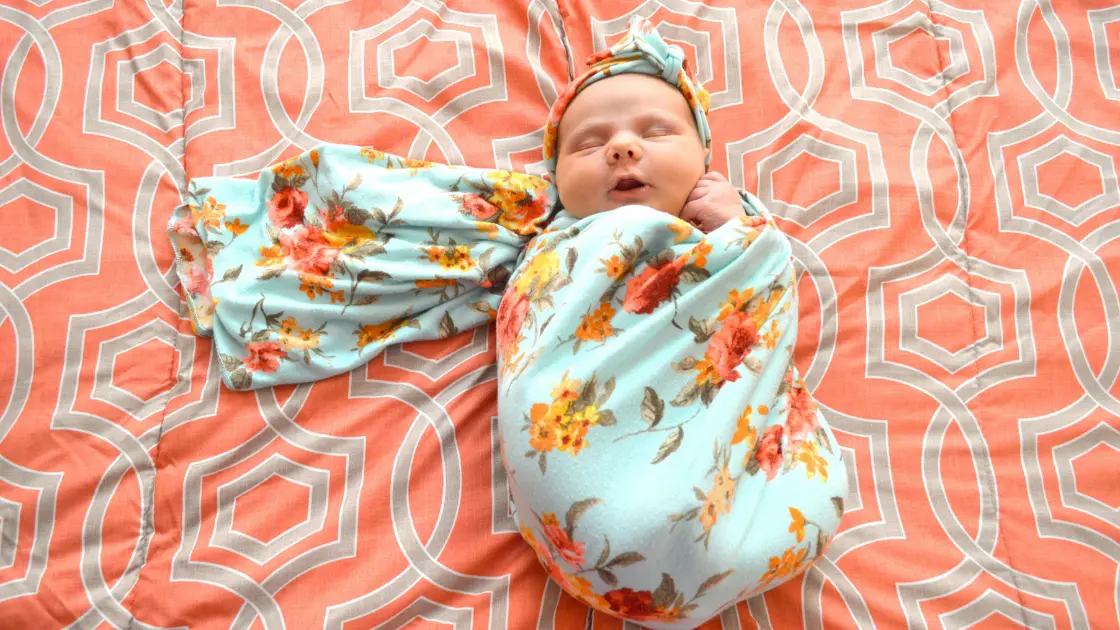
Knowing how how to swaddle a baby safely and properly will keep your love bundle feeling safe and secure. Here’s a step-by-step guide.
- Step-by-Step: How to Swaddle
Spread the baby swaddle blanket out flat in a diamond shape.
Lay the baby swaddle blanket out on a flat surface with a corner up (pointing to the 12 o’clock position in the diamond).
- Fold the top corner down to form a triangle.
Fold the top point down about 6 inches to create a straight edge. This forms the top of the baby swaddle where your baby’s neck will rest.
- Place the baby on their back with shoulders just below the fold.
Gently lay your baby down on their back so that their shoulders are slightly below the folded edge. The baby’s head should remain above the swaddle to avoid covering the face.
- Gently place the right arm down and fold the right side over the baby.
Tuck the baby’s right arm straight alongside their body. Pull the right side of the blanket across the body and snugly wrap it over the baby’s chest, tucking the edge under their left side.
- Tuck under the left side of their body.
Make sure the wrap is secure but not tight around the chest. Tucking it under the left side keeps it in place and prevents unraveling.
- Fold the bottom up, leaving room for hips and legs.
Fold the bottom point of the blanket upward over your baby’s feet. Make sure there’s enough room for the baby to move their legs and hips to avoid hip dysplasia.
- Place the left arm down and fold the left side across, tucking behind.
Straighten the left arm down, then bring the left side of the blanket across the baby’s body. Wrap it snugly and tuck the end behind the back to complete the swaddle.
Choosing the Best Swaddles for Newborns
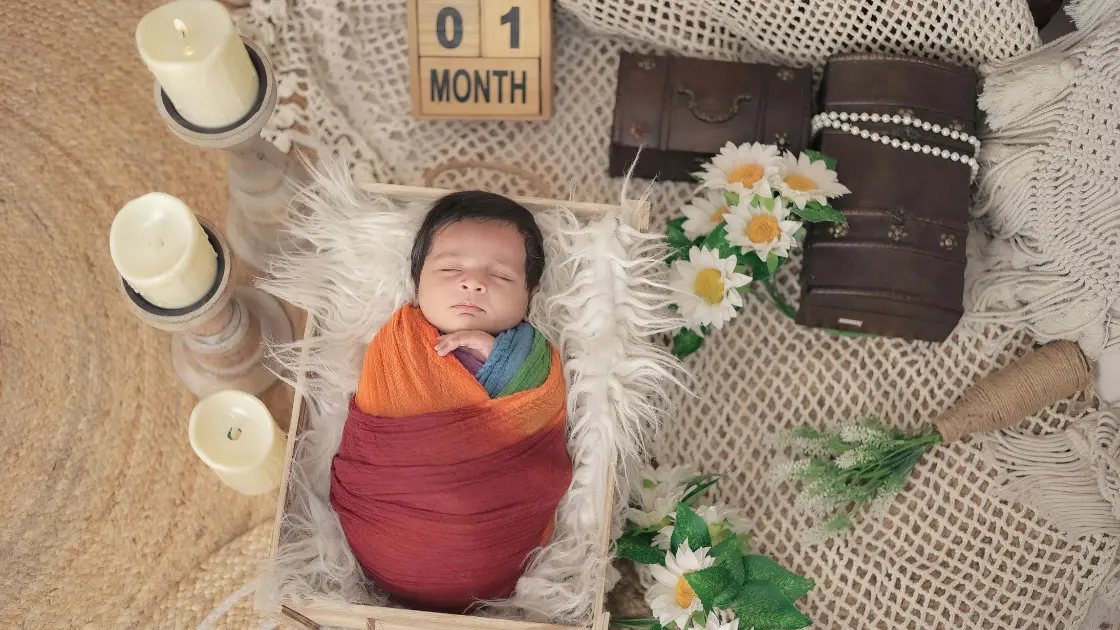
Every baby is different. Let’s go through the best swaddles for newborns — how to pick ’em.
Types of Baby Swaddles
- Swaddle blankets: These are traditional square or rectangular blankets made from breathable materials like muslin or cotton. They’re highly flexible and allow for different swaddling techniques. Great for parents who prefer a hands-on approach and want to customize the tightness and fold. Baby Swaddle blankets also double up as burp cloths, nursing covers, or stroller covers.
- Baby swaddle wrap: Designed for ease and speed, swaddle wraps usually come with Velcro, snaps, or zippers. They make swaddling almost foolproof—perfect for new parents or nighttime changes. These wraps offer a snug fit without complex folding, and some designs even allow for arm-out positioning during transitions.
- Sleep sacks: These wearable baby blankets are absolutely perfect for babies transitioning out of full swaddles. They often feature wings or detachable arms so you can swaddle with arms in or out. Sleep sacks provide a safe alternative once your baby starts rolling and can’t be tightly swaddled anymore. They maintain warmth without risking loose blankets in the crib.
Best Newborn Swaddle Picks
- Halo SleepSack Swaddle
A hospital-trusted choice, this wearable blanket has adjustable wings and a roomy sack to allow for healthy hip movement. Ideal for newborns who need a snug, safe sleep solution.
- Love To Dream Swaddle UP
Unique arms-up design lets babies self-soothe while still preventing the startle reflex. Zippered design makes it super easy to put on and take off.
- SwaddleMe Original Swaddle
Affordable and easy to use, this swaddle uses Velcro for a secure fit and comes in multiple sizes for growing babies. Great for beginners.
- Aden + Anais Classic Swaddle Blankets
Crafted of soft muslin cotton, these generous-sized blankets work for traditional swaddling, as well as a multipurpose stroller cover or burp cloth.
- Miracle Blanket Swaddle
Known for its escape-proof design, the Miracle Blanket gently holds arms in place without Velcro or zippers, which some babies prefer.
- Ergobaby Original Swaddler
Features a unique ‘escape-proof’ design that keeps baby’s arms in place while allowing for natural leg movement. Made from 100% cotton.
- Nested Bean Zen Swaddle
Lightly weighted pads mimic a parent’s touch on the chest and sides, promoting longer, more restful sleep. Especially helpful for babies who wake easily.
- Burt’s Bees Baby Beekeeper Wearable Blanket
GOTS-certified organic cotton and no rough Velcro make this a favorite among eco-conscious parents. Great for transitioning out of traditional swaddling.
- Ollie Swaddle
Made with moisture-wicking fabric and a unique elastic loop closure, the Ollie Swaddle adapts to your baby’s size and supports longer use.
- Summer Infant SwaddleMe Pod
A cocoon-like, zip-up swaddle designed for preemies and newborns. Ultra-soft and stretchy, ideal for the earliest days of life.
These are top-rated best swaddles trusted by parents worldwide for their comfort, ease of use, and baby-safe features.
When to Stop Swaddling Baby
A big question parents have: when to stop swaddling baby?
Signs It’s Time to Stop Swaddling
- Rolling over: Once your baby begins to roll over on their own, swaddling can become dangerous. It increases the risk of suffocation if the baby rolls onto their stomach and can’t use their arms to push up. Most babies begin attempting this around 8 weeks.
- Breaking out of the swaddle: If your baby regularly escapes the swaddle, it’s a sign they’re ready for more movement. Escaping can lead to loose fabric in the crib, posing a safety risk.
- Decreased sleep quality: Instead of sleeping longer, if your baby seems fussier or wakes more often while swaddled, they might be signaling that they want more freedom to move.
- Trying to suck fingers: Self-soothing behaviors like sucking fingers or hands become important around 2–3 months. Swaddling restricts this motion. Letting one arm out or stopping swaddling can support their development.
The typical time to start transition is around 8–12 weeks.
Benefits of Swaddling Your Newborn
- Promotes longer, deeper sleep: Swaddling helps baby sleep on their back, which is the SIDS (Sudden Infant Death Syndrome) protection position. When babies feel safe and unharried, they’re more likely to snooze in longer, deeper stretches. This is especially important in the early weeks when their circadian rhythm is still developing.
- Encourages self-soothing: A snug swaddle can mimic the comforting pressure of a caregiver’s touch. This allows your baby to self-soothe when they wake slightly between sleep cycles. Baby swaddles like the Love To Dream allow babies to suck their hands through fabric, which further promotes self-soothing without the risk of scratching.
- Reduces risk of SIDS (when done correctly): Research indicates that swaddling, when combined with safe sleep practices—like laying babies on their backs—can reduce the risk of Sudden Infant Death Syndrome. It helps minimize sleep disruptions that might otherwise cause unsafe rolling or re-positioning during sleep.
- Eases overstimulation: The world is loud, bright, and full of new experiences for a newborn. Swaddling acts as a sensory filter, providing a calm, enclosed environment that reduces stimuli. This can prevent fussiness, crying, and sleep resistance often triggered by overstimulation.
Is Swaddling Safe for All Babies?
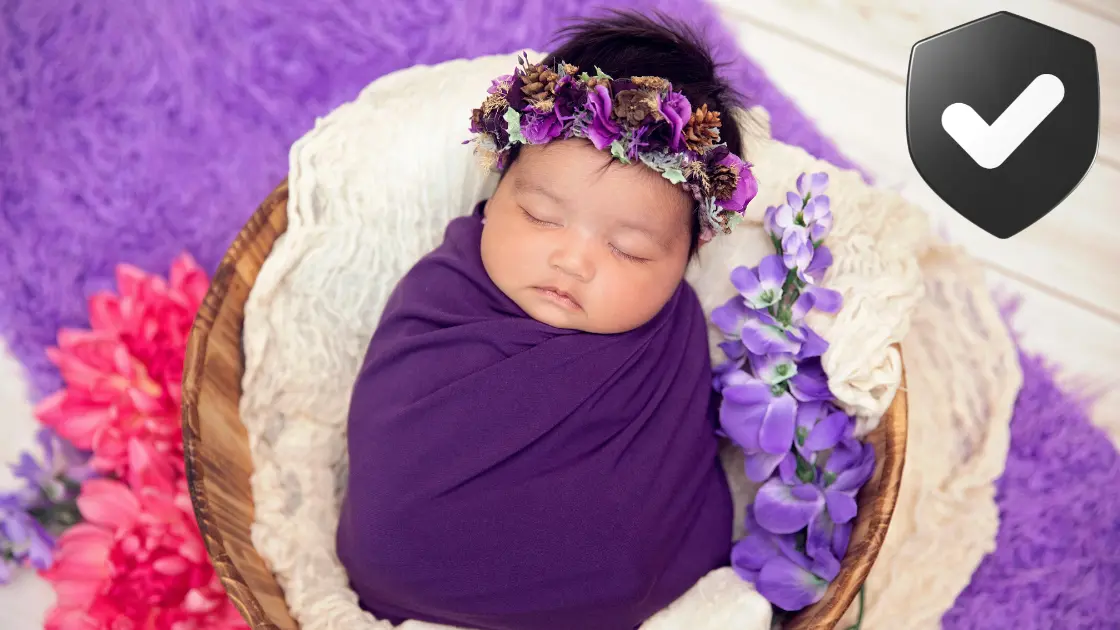
Generally, yes — but there are a few safety guidelines to follow:
- Always place baby on their back: This is the safest sleep position for newborns. Placing a swaddled baby on their stomach enhance the risk of Sudden Infant Death Syndrome (SIDS). Always lay them on their back for naps and bedtime.
- Use breathable fabrics: Choose lightweight, breathable materials like cotton or muslin to prevent overheating. Avoid thick, non-breathable fabrics that can trap heat and raise your baby’s body temperature.
- Don’t swaddle too tight around hips: Tight swaddling around the lower body can restrict natural hip movement and may lead to hip dysplasia. Make sure the baby swaddle is snug around the chest but loose enough at the hips for free movement.
- Discontinue when baby can roll over: Once your baby shows signs of rolling, swaddling becomes unsafe. A swaddled baby who rolls onto their stomach may not be able to roll back or use their arms to reposition themselves, increasing the risk of suffocation.
How to Transition Out of the Swaddle
Transitioning does not have to be hard. Use these tips:
Gradual Transition Steps
- Start with one arm out: Begin with one arm out Swaddle your baby with one arm out and one arm swaddled. This gives them practice at soothing themselves and feeling safe as well. Carry on with this for a couple of nights until your baby is accustomed to it.
- Use a swaddle with adjustable arm flaps: These baby swaddles make it easy to control how much freedom your baby has. Start by freeing one arm, then both arms while still maintaining a snug wrap around the chest.
- Try a swaddle for newborn that converts to a sleep sack: Transitional products like the Zipadee-Zip or Halo SleepSack let you slowly ease your baby out of swaddling while still providing the comfort of being wrapped. They’re perfect once your baby starts rolling.
- Go cold turkey if baby resists partial changes: If gradual steps lead to frustration or disrupted sleep, some babies respond better to an immediate switch. Remove the baby swaddle entirely and replace it with a wearable blanket or sleep sack.
Top Features to Look for in a Baby Swaddle Wrap
When buying a baby swaddle wrap, focus on:
- Breathable cotton or bamboo fabric: They are soft on a baby’s delicate skin and help to control your baby temperature so that they do not overheat. Bamboo is super for its hypoallergenic qualities, which is why its perfect for babies and sensitive skin types.
- Easy fastening (Velcro or zipper): Look for baby swaddles that offer quick and secure closures. Velcro and zippers make late-night diaper changes and reswaddling fast and hassle-free, even for first-time parents.
- Machine-washable design: Babies are messy! baby swaddles that hold up after repeated washing are a lifesaver. Choose options that retain softness and shape even after several laundry cycles.
- Hip-healthy fit: A proper baby swaddle should fit snugly around the core yet provide freedom of movement in the legs and hips. This is good for the health of the hips, and prevents hip dysplasia.
Best Materials for Swaddling Blankets
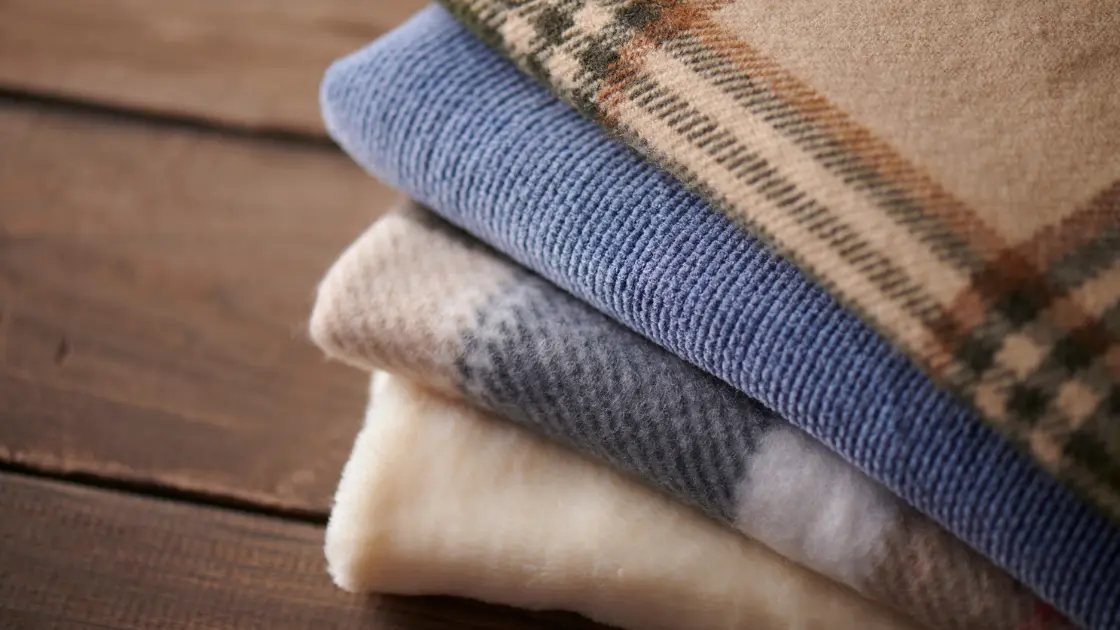
Choosing quality fabric is critical. The right material ensures your baby stays comfortable, safe, and calm while swaddled. Below are the most popular types of fabrics used in swaddling blankets:
- Cotton: This is the best of materials for swaddle fabric. It’s naturally breathable, lightweight, and great for sensitive skin. Baby swaddles made of cotton wash beautifully and are easy to find.
- Muslin: An open-weave type of cotton that is very soft and breezy feeling.It provides excellent airflow, helping prevent overheating. Muslin blankets also stretch a bit, making them easier to wrap snugly without being restrictive.
- Bamboo: Bamboo fabric is a luxurious option—ultra-soft, moisture-wicking, and naturally hypoallergenic. It’s ideal for babies with allergies, eczema, or extra-sensitive skin. Bamboo Baby swaddles tend to be silky to the touch and very breathable.
FAQs About Baby Swaddles
Q1. What is the best swaddle for a newborn who moves a lot?
Try a baby swaddle wrap with secure Velcro or zipper like the Love To Dream Swaddle.
Q2. Can swaddling help babies sleep through the night?
Yes, swaddling reduces startle reflex and supports longer sleep cycles.
Q3. Is it okay to swaddle during daytime naps?
Absolutely. Swaddling helps with both nighttime and daytime sleep.
Q4. When can babies sleep with a pillow instead of a swaddle?
Babies shouldn’t use pillows. Only stop swaddling when they show signs of rolling over.
Q5. Do all babies like swaddling?
Not all. Some prefer more freedom. Try different styles of baby swaddles to see what works best.
Explore more on Pregnancy Must –
